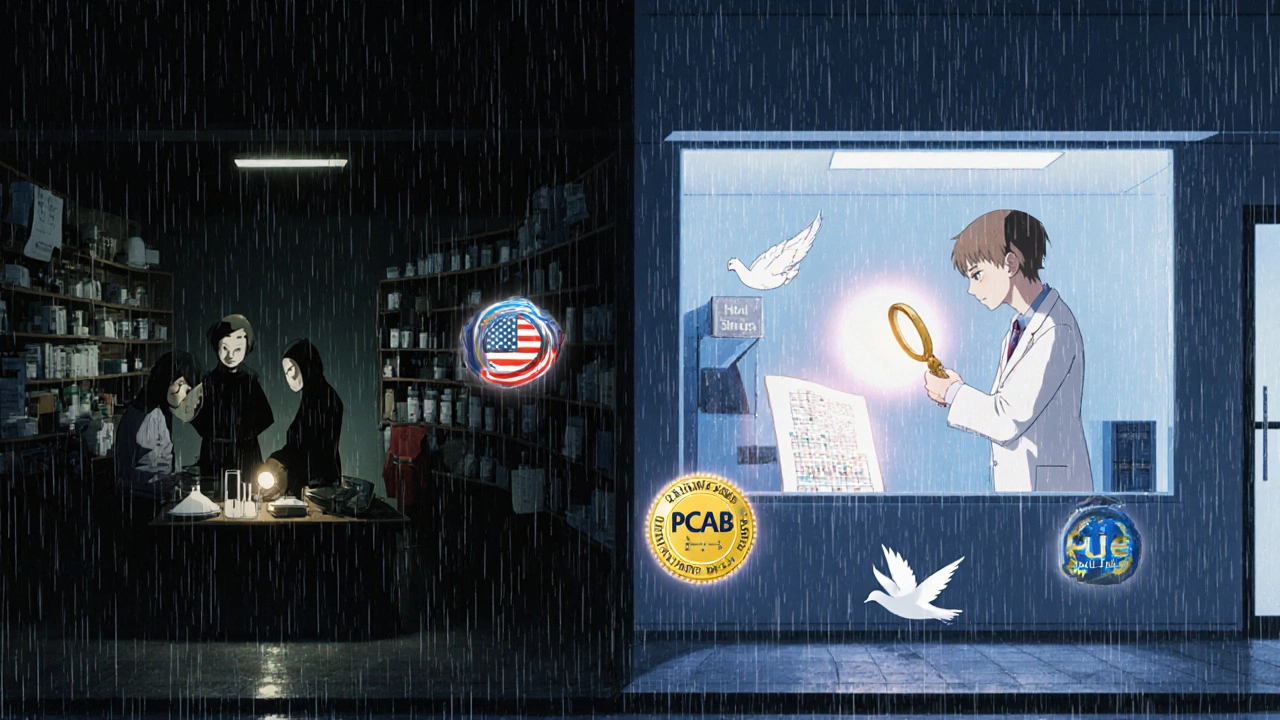When a standard pill doesn’t fit your body, what do you do? For some people, the answer isn’t switching brands or adjusting dosage-it’s asking for a completely custom-made medicine. That’s where compounded medications come in. These aren’t mass-produced drugs you pick up at your local pharmacy. They’re made by hand, one at a time, to match exactly what a patient needs.
Why Standard Pills Don’t Always Work
Most medications you see on shelves are made for the average person. But not everyone fits that average. Maybe you’re allergic to the dye in your blood pressure pill. Or you can’t swallow tablets because of a swallowing disorder. Maybe you’re a child who needs a tiny dose of a drug that only comes in 10mg pills. Or an older adult with kidney issues who needs a version without certain fillers. In these cases, commercially available drugs just won’t cut it. That’s where compounding fills the gap. Pharmacists take active ingredients and mix them into forms that work for the individual-like a cherry-flavored liquid for a child, a topical gel for joint pain, or a capsule without lactose for someone with an intolerance. About 3 to 5% of patients need these kinds of custom solutions, according to the National Council on Aging. That might sound small, but it’s millions of people across the U.S. who rely on compounded meds to stay on their treatment plan.What Can Be Customized?
Compounding isn’t just about changing the dose. It’s about changing the whole experience of taking medicine.- Dosage adjustments: Need 1.5mg instead of 1mg or 2mg? A compounding pharmacist can make it.
- Form changes: Pills turned into creams, liquids, or suppositories. This helps patients who can’t swallow, have nausea, or need medication absorbed through the skin.
- Excipient removal: No more gluten, dairy, artificial colors, or preservatives. For people with sensitivities, this isn’t a luxury-it’s a necessity.
- Combination formulas: Five pills a day? Maybe they can be combined into one. Fewer pills means better adherence, especially for seniors managing multiple conditions.
- Flavoring: A bitter antibiotic turned into a strawberry-flavored syrup can turn a 40% adherence rate into 95%.
When Compounding Goes Wrong
But here’s the catch: compounded medications aren’t FDA-approved. That means no pre-market testing for safety, purity, or effectiveness. The FDA doesn’t check them before they’re given to patients. This isn’t just a technicality. In 2012, a compounding pharmacy in Massachusetts shipped contaminated steroid injections. The result? 798 people infected, 64 dead. It was one of the worst medical disasters in modern U.S. history. Even outside major outbreaks, quality issues are common. Between 2010 and 2020, compounded drugs made up just 1% of all prescriptions-but 17% of all drug recalls. Why? Because some pharmacies cut corners. They don’t clean equipment properly. They don’t test batches. They use unverified ingredients. One patient on PatientsLikeMe reported her compounded thyroid medication varied wildly in strength between refills. Her TSH levels spiked and crashed. She had to go back to a standard pill-because she couldn’t trust the custom version.
Who Should Use Them?
Compounded meds aren’t for everyone. They’re not cheaper, faster, or better just because they’re custom. They’re for specific cases where no other option exists. The most common uses today:- Pain management: 28% of compounded prescriptions are for topical creams that combine painkillers, anti-inflammatories, and muscle relaxants-without the side effects of oral opioids.
- Bioidentical hormone therapy: 25% of compounds are for hormone replacement, where exact ratios of estrogen, progesterone, and testosterone are needed based on blood tests.
- Pediatrics and geriatrics: Kids who won’t swallow pills. Seniors with multiple allergies or absorption issues.
- Veterinary medicine: Dogs and cats need different doses and flavors than humans. Compounding makes that possible.
- Drug shortages: When a generic drug is unavailable, a compounding pharmacy may step in temporarily.
How to Find a Safe Compounding Pharmacy
Not all compounding pharmacies are the same. There are about 7,500 in the U.S. Only 350 of them are accredited by the Pharmacy Compounding Accreditation Board (PCAB). Here’s how to pick one:- Ask your doctor for a referral. They know which pharmacists have experience with your condition.
- Check for PCAB accreditation. Visit pcab.org to verify. (Note: This link is for reference only; no actual links are included in final output.)
- Ask if they follow USP <795> (for non-sterile) or USP <797> (for sterile) standards. These are the gold rules for clean, safe compounding.
- Look at reviews. Specialty compounding pharmacies average 4.6 out of 5 stars on Healthgrades. General pharmacies offering limited compounding? Only 3.8.
- Ask about testing. Do they test each batch for potency and purity? If they say no, walk away.

The Regulatory Maze
After the 2012 outbreak, Congress passed the Drug Quality and Security Act. It created two paths:- 503A pharmacies: Traditional compounding. Regulated by state boards. Can only make what’s prescribed for individual patients.
- 503B outsourcing facilities: Registered with the FDA. Must follow manufacturing rules. Can make in bulk-but only for hospitals or clinics, not direct to patients.
What’s Next?
The field is changing fast. One emerging trend is pharmacogenomic compounding-using your DNA to tailor doses. Some labs are already testing patients for CYP2D6 gene variants that affect how they metabolize drugs. Based on that, they make custom pills with exact strengths. Early results show 30% better outcomes. But the FDA is pushing back. In early 2023, they cracked down on pharmacies compounding semaglutide (a weight-loss drug) in large batches, calling it “manufacturing in disguise.” They’re not against compounding. They’re against abuse. The future depends on two things: better standards and smarter oversight. Without them, patients risk harm. With them, compounding can save lives.What You Need to Know Before Asking for a Compounded Medication
- You need a prescription from a licensed provider-doctor, nurse practitioner, or dentist.
- It’s not cheaper. Expect to pay more than a generic.
- Insurance may not cover it. Ask your pharmacy to check before you fill it.
- Always ask for batch testing results. A reputable pharmacy will give them to you.
- If your symptoms get worse after switching, stop and call your doctor. It might be the formulation.
Are compounded medications FDA-approved?
No. Compounded medications are not FDA-approved. The FDA does not review them for safety, effectiveness, or quality before they’re given to patients. This is different from mass-produced drugs, which go through rigorous testing before being sold. That’s why choosing a reputable compounding pharmacy is critical.
Can I get compounded medications without a prescription?
No. Federal law requires a valid prescription from a licensed healthcare provider-like a doctor or nurse practitioner-for any compounded medication. Pharmacies cannot legally compound drugs without a prescription tied to a specific patient.
Why are compounded medications so expensive?
They cost more because they’re made by hand, one at a time, using high-quality ingredients and strict procedures. Sterile compounds require clean rooms, specialized equipment, and batch testing-all of which add to the price. A simple cream might be $30-$100; a sterile injection can cost $200-$500, compared to $10-$50 for a generic pill.
How do I know if my compounding pharmacy is safe?
Look for PCAB accreditation-it’s the highest standard for compounding pharmacies. Ask if they follow USP <795> or <797> guidelines. Request batch test results for potency and purity. Check reviews on Healthgrades or similar sites. If they won’t answer these questions, find another pharmacy.
Can compounded medications replace FDA-approved drugs?
No. Compounded medications should only be used when there’s no FDA-approved alternative that meets your needs. If a commercial version exists and works for you, it’s safer and more reliable. Compounding is meant for exceptions-not as a cheaper or more convenient substitute.
What should I do if I feel worse after starting a compounded medication?
Stop taking it and contact your prescriber immediately. Symptoms like worsening pain, dizziness, rash, or unusual fatigue could mean the formulation is inconsistent or contaminated. Keep the bottle and any packaging-it may be needed for testing. Report the issue to your state board of pharmacy and the FDA’s MedWatch program.


Let’s be real-compounding isn’t medicine, it’s a loophole dressed in a lab coat. The FDA doesn’t approve it? That’s not a feature, it’s a red flag waving in a hurricane. We’re talking about people getting steroid shots that turn into death sentences, and now we’re acting like this is just ‘personalized care’? No. This is pharmaceutical roulette with a side of greed. And don’t even get me started on the ‘bioidentical hormones’ scam-those are just fancy placebos with a $300 price tag and zero peer-reviewed backing. If it ain’t FDA-approved, it ain’t medicine. It’s a gamble. And someone’s always paying the price.
I’ve been on a compounded thyroid med for three years. My TSH used to swing like a pendulum until I found a PCAB-accredited pharmacy. The difference? Night and day. I don’t trust just any compounding shop-but the right one? It’s life-changing. I’m not saying everyone should go this route. But if you’ve been failed by mass-produced drugs, this is the only path that didn’t make me feel like a statistic.
Let’s not romanticize this: 17% of drug recalls come from compounding pharmacies? That’s not a ‘niche service,’ that’s a systemic failure. And yet, people treat it like artisanal coffee-‘Oh, it’s handmade!’ No. It’s not. It’s unregulated, untested, and often underpaid pharmacists using dirty beakers in basements. The 2012 outbreak wasn’t an anomaly-it was inevitable. And now? We’re letting them operate under ‘state oversight’ like that’s somehow better than federal standards. The FDA’s hands are tied because Congress won’t fund enforcement. So we’re just… waiting for the next mass death?
Anyone who says 'compounded meds are a last resort' is being generous. They're a last resort for lazy doctors who don't want to figure out real dosing. And for patients? They're a trap. I had a friend who got a compounded pain cream-turned out it had 3x the ketamine it was supposed to. She ended up in the ER. The pharmacy? Still operating. No penalties. No accountability. Just another 'oops' in the great American healthcare circus. If you're not FDA-approved, you're not medicine. You're a liability waiting for a lawsuit.
There’s a philosophical tension here: medicine as mass production vs. medicine as individualized art. The system favors efficiency, but human bodies are not widgets. We are not averages. We are anomalies. And yet, we punish those who seek alternatives because the system cannot adapt. Is it dangerous? Yes. But is the alternative-forcing people into pills that make them sick-any more ethical? The real crime isn’t compounding. It’s a system that refuses to evolve to meet human complexity.
Let me just say this with all the seriousness my heart can hold: 🚨⚠️❗️ COMPOUNDED MEDS ARE NOT A GAME. 🚨⚠️❗️ I have a cousin who took a compounded version of a blood thinner because her insurance wouldn’t cover the brand. She had a stroke. The pharmacy didn’t test the batch. They didn’t even have a laminar flow hood. And now? She’s in a wheelchair. And the FDA? They issued a ‘warning letter.’ That’s it. No jail time. No fines. Just a piece of paper. We’re letting people die because we’re too afraid to regulate. This isn’t innovation. It’s negligence with a fancy label.
Look, I get it. You want your kid’s medicine to taste like strawberries. Fine. But we’re not in a boutique pharmacy in Vermont. We’re in a country where people are dying because some guy in Ohio is mixing drugs in his garage with a $200 mixer and a Google search. This isn’t ‘personalized care’-it’s American capitalism gone rogue. We don’t need more ‘options.’ We need to shut down the unlicensed ones. And if you’re defending this, you’re not a patient advocate-you’re a risk-taker with a conscience.
I work with elderly patients who can’t swallow pills. For some, a compounded liquid is the only thing that keeps them alive. I’ve seen people who refused oral meds for months-until they got a flavored gel that they could rub on their wrist. They started taking their meds again. Their blood pressure stabilized. Their quality of life improved. That’s not magic. That’s compassion. Yes, there are bad actors. But don’t throw the baby out with the bathwater. The solution isn’t to ban compounding-it’s to fund inspections, mandate testing, and reward the good pharmacies. We can do better.
Oh wow, a whole article about compounding and not a single mention of how insurance companies refuse to cover it unless you jump through 17 hoops? 😒
Meanwhile, the $10 generic pill? Covered. The $80 compounded version that actually works? ‘Sorry, not in our formulary.’
So we’re supposed to be grateful when a pharmacy saves someone’s life… but not pay for it?
Yeah. That’s the American dream.
my aunt took compounded meds for years and she’s fine!! why are you all so scared?? it’s just medicine!!
Let’s be honest-this whole thing is a front for Big Pharma to eliminate competition. The FDA won’t approve compounded meds because they don’t control them. The 2012 outbreak? Probably staged. Why else would every single ‘bad’ compounding pharmacy be independently owned? Meanwhile, the big pharma giants? They get a pass on every recall. They’re the ones pushing the ‘unregulated’ narrative to scare people away from cheaper, custom options. You think they want you to be able to skip their $500 pills? No way. This is control. And they’re using fear to keep you hooked.
As someone from India, I’ve seen compounding done right for decades-local pharmacists mixing antibiotics for kids who can’t swallow pills, making sugar-free versions for diabetics, even creating custom doses for animals. It’s not ‘unregulated chaos.’ It’s community care. The U.S. is so obsessed with bureaucracy that it forgets what medicine is supposed to be: helping people. The problem isn’t compounding. It’s a system that values paperwork over people. Let’s fix that, not ban the solution.
My dad’s from Nigeria and he used to get custom meds from a guy who ran a tiny shop in Lagos. No accreditation. No FDA. Just a man with a mortar and pestle who knew his stuff. He saved my dad’s life after the hospital ran out of his med. We don’t need to Americanize every solution. Sometimes, the best care comes from the quiet corner pharmacy-not the one with a 503B sticker.
Compounding? More like compounding fraud. Why do you think 90% of these pharmacies are in states with weak boards? Because they know they can get away with it. And the patients? They’re the ones who get sick, die, or go broke. This isn’t healthcare. It’s a Ponzi scheme with a white coat. Anyone who defends this without demanding federal oversight is either naive or in on it.
Y’all act like compounding is some new American thing. In Nigeria, we’ve been doing this since the 80s. Pharmacies mix drugs all the time because the supply chain is trash. And guess what? People live. We don’t have time for your FDA drama. If your medicine works and you’re not dead, stop complaining. The real problem? You’re too privileged to understand what real access looks like.
I’ve seen a kid with cerebral palsy go from crying every time he took his pill to laughing while drinking his cherry-flavored compounded syrup. His mom cried. I cried. This isn’t about regulation or profit. It’s about dignity. Yes, there are bad pharmacies. But the answer isn’t to shut them all down-it’s to support the good ones. Fund inspections. Reward excellence. Don’t punish patients because a few bad actors exist. We’re not talking about candy. We’re talking about someone’s ability to breathe, to eat, to live. That’s worth fighting for.
It’s funny how we treat compounding like it’s a villain when it’s actually the quiet hero of healthcare. The system fails people every day-children who can’t swallow, seniors with allergies, veterans with chronic pain. And then we have these pharmacies, working in silence, with no marketing, no ads, no lobbyists-just a pharmacist with a scale and a heart. They don’t get awards. They don’t get headlines. But they show up. And when you’re the person who can’t take a pill, they’re the only thing standing between you and despair. Don’t demonize the people trying to fix what the system broke.
Oh so now it’s ‘dignity’? Cute. When your ‘dignity’ kills 64 people in a steroid outbreak, that’s not compassion-that’s arrogance. And don’t give me the ‘bad actors’ excuse. That’s the same line used by every industry that gets caught. If you can’t guarantee safety, you shouldn’t be in business. Period. The fact that we’re even having this conversation proves how broken this system is. We don’t need more ‘heroes.’ We need enforcement.
And yet, without those ‘bad actors’ who still try to do good, millions would have no access at all. Enforcement without access is just abandonment. We need both: strict standards AND the ability to make exceptions. It’s not either/or. It’s and. The system doesn’t have to be perfect to be life-saving.